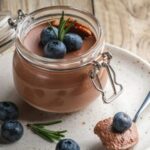Contents
show
Cheesemaking: From milk to hard cheese
The cheese production goes through individual stations, the results of which can already be found in a different form on our menu.
- In the first step of cheese production, only the milk is considered. It is cleaned and then pasteurized. This is a process in which liquid food is heated to kill microorganisms. The food then has a longer shelf life and is less susceptible to mold growth.
- In order to determine the fat content accurately, all fat is removed from the milk. One speaks of the so-called de-framing. The cream is then added to the milk to achieve a predetermined fat content. To make the liquid milk more viscous, lactic acid bacteria and rennet are added. One speaks of the so-called “dick laying”.
- Rennet is a mixture of enzymes obtained from the stomach of e.g. cows. This is also the reason why some cheeses are not vegetarian. After all, the animal is forcibly killed to obtain the rennet, so the consumption of rennet-containing cheese is at odds with a vegetarian diet.
- The curdling process differs in duration from type of cheese to type of cheese and can sometimes take several hours. A so-called cheese harp is then used. With their help, the now viscous mass is separated. At this point, the foundation for the later cheese is laid. The finer the cheese is treated, the harder the finished product will be. These chunks of cheese are called curds.
- The problem is that the cheese still contains whey as it is. Whey is a yellowish liquid that is produced when milk is made into cheese. This must be separated. This is done by moving the cheese mass, for example by twisting and turning. In the course of this, the cheese mass is also filled into the appropriate cheese molds and layered there.
- Of course, after the molds have been filled, the cheese still has to be given its obligatory rind. This is favored by bathing in a brine. In addition, the cheese now has to mature. In the meantime, depending on the variety, they are turned, provided with mold, or even cleaned. A so-called affineur is responsible for this.
- This final process takes days, weeks, or even months. Soft cheese needs less maturing time than hard cheese. The cheese is kept and stored in a dairy until it is sold.
Identical production, different taste – the difference between the cheeses
The manufacturing process itself does not differ from cheese type to cheese type. Nevertheless, almost every cheese has its unique taste.
- For example, cream cheese is the product that results when cheese is formed without aging. There is also no need to bathe in brine.
- If herbs are added to the cheese mixture before shaping and maturing, corresponding herb cheeses are created.
- If sheep’s, buffalo, or goat’s milk is used instead of cow’s milk, there are also differences in taste.
- To make salty cheeses like feta, the cheese is simply left in the brine to mature. This doesn’t create a rind, but it makes for a slice of harder cream cheese.
- For the production of mold cheese, mold is injected into the finished cheese mass, which additionally enriches the cheese. These fungi belong to the noble mold group, so they are completely harmless to the human body.
- Finally, the fat content also has a significant effect on the taste. Cream cheese, for example, consists of more than 50 percent fat.
- The holes in some types of cheese are also caused by the addition of individual bacteria that eat through the inside of the cheese and thus tear holes.



